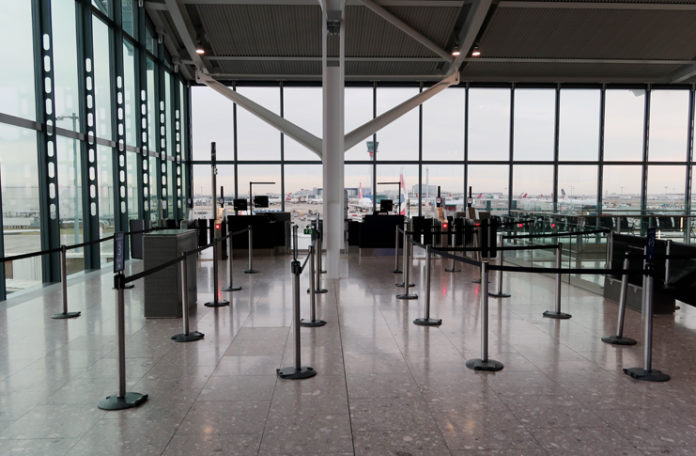
TravelingForMiles.com may receive commission from card issuers. Some or all of the card offers that appear on TravelingForMiles.com are from advertisers and may impact how and where card products appear on the site. TravelingForMiles.com does not include all card companies or all available card offers.
Some links to products and travel providers on this website will earn Traveling For Miles a commission that helps contribute to the running of the site. Traveling For Miles has partnered with CardRatings for our coverage of credit card products. Traveling For Miles and CardRatings may receive a commission from card issuers. Opinions, reviews, analyses & recommendations are the author’s alone and have not been reviewed, endorsed, or approved by any of these entities. For more details please see the disclosures found at the bottom of every page.
In the past couple of weeks, we’ve started to see a few airlines scheduling route reboots for the upcoming winter season and for summer 2021, but as promising as some of these schedules are and as much hope as some of these plans are giving travelers, the fact remains that a lot of what is being planned is probably not going to happen. I’d love for it all to happen, but it’s time for a dose of reality – intercontinental travel isn’t going to get easier any time soon.
For intercontinental travel to start growing at a meaningful rate we’re going to have to see large parts of the world get the coronavirus under control and we’ll probably need a vaccine too. The first requirement isn’t even close to being met and, despite what some world leaders have been attempting to suggest, most scientists seem to agree that we’re still quite a way from having a viable vaccine for Covid-19.
The Virus Isn’t In Retreat
In Europe, we’re currently seeing counties like Germany, Switzerland, Spain, and France seeing levels of infection rising at alarming rates (France recorded 6,111 infections in one day this week – its highest number of infections since May – and Spain and Germany’s numbers are the highest they’ve been since spring).
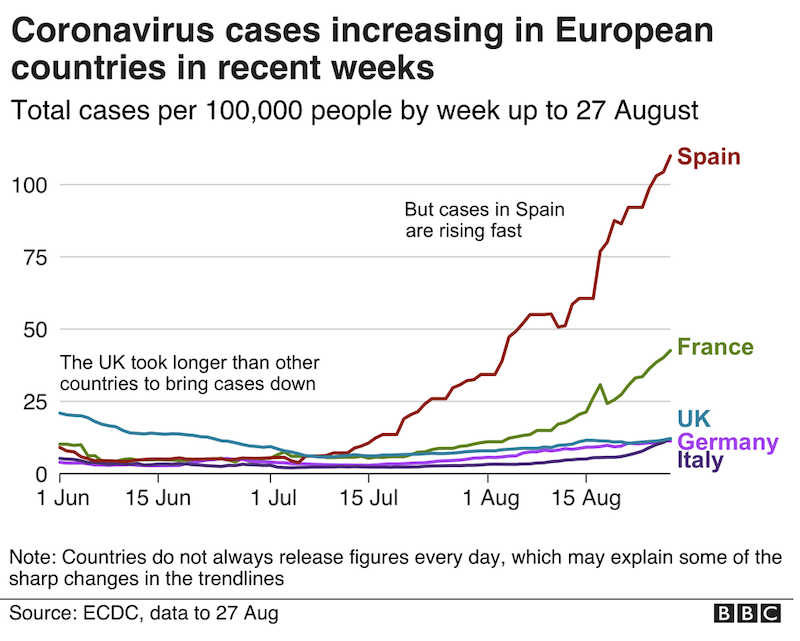
In Asia, we’re seeing countries like India and Indonesia showing no signs of getting their infection rates under control (they haven’t stopped rising since the beginning of the pandemic)…
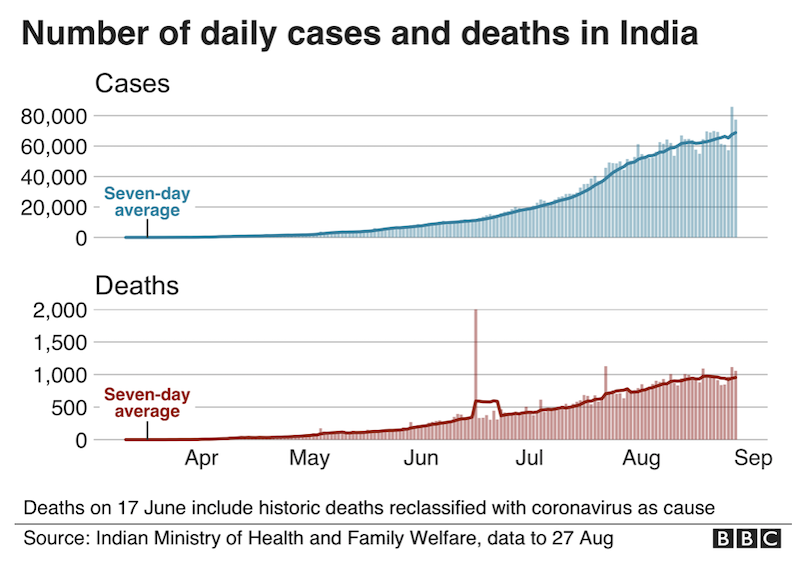
…and on a continent-by-continent basis, things aren’t looking particularly great either.
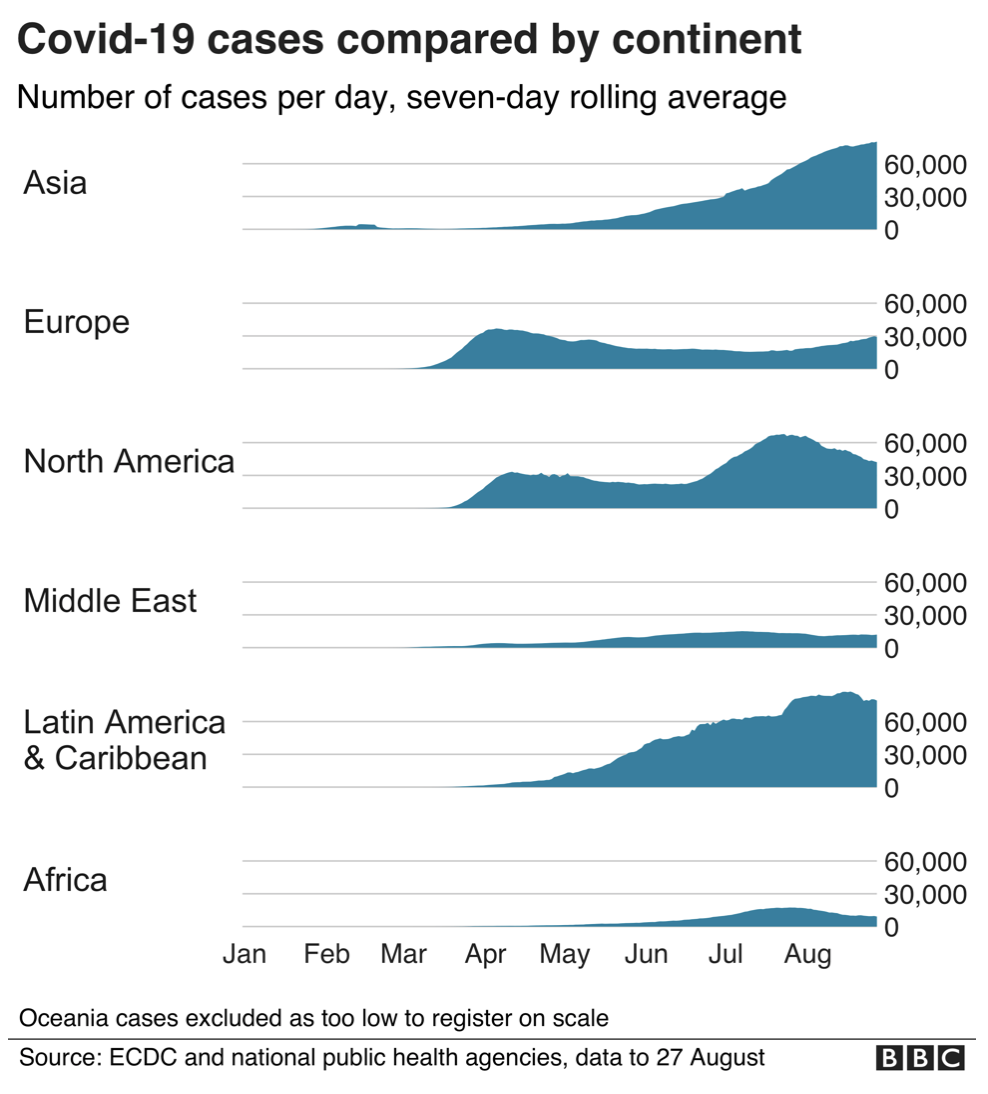
The numbers out of the United States (as a whole) are looking better…
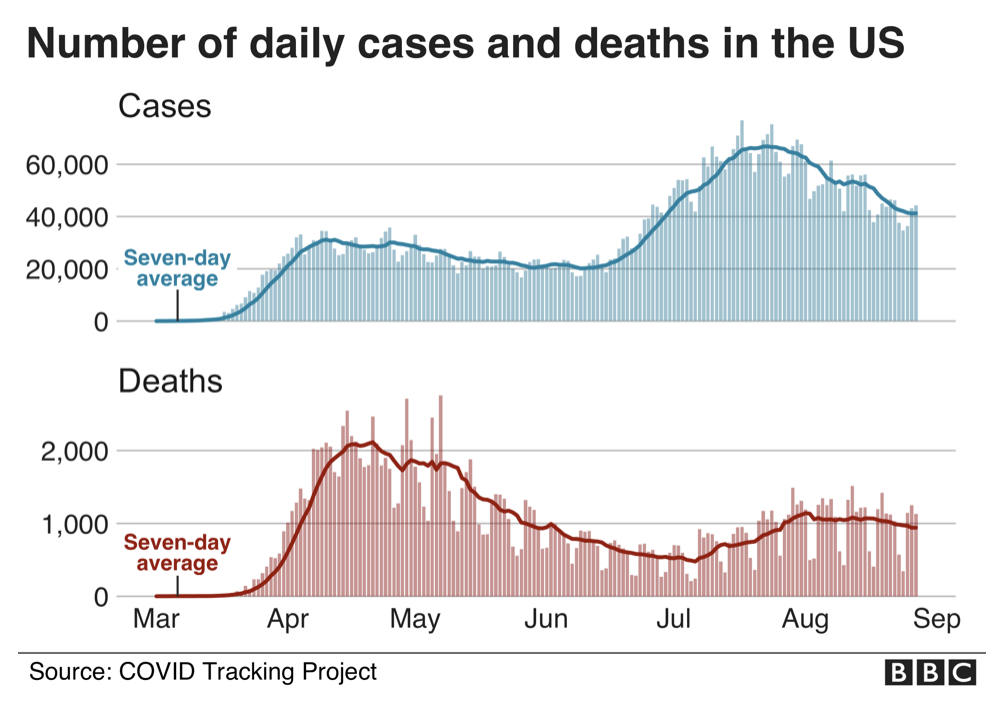
…but what these numbers don’t show is that there are still significant areas of the US where the virus is in the ascendancy. It hasn’t gone away. These aren’t graphs that inspire much confidence.
Borders Won’t Open While Cases Keep Spiking
Regardless of what anyone may think of the current crisis, the fact is that most governments are not about to open up their borders to any great extent while they think that there’s a risk of importing more infected people from abroad. To do so would be political suicide. Most politicians appear to be happier dealing with a struggling economy (which they can blame on Covid-19) rather than a resurgent coronavirus and a nation forced back into lockdown (the blame for which will be laid squarely at their feet if they’re perceived to have opened up borders to too great an extent).
Some politicians may feel that they have nothing left to lose and so may feel that opening up their country’s borders is a good idea, but they’ll still have to find other countries willing to open up their borders too and that’s going to be far from a simple task. All you have to do is to look at how swiftly various European countries were happy to dispense with the EU’s open border policy and impose restrictions on travel to see that even the most die-hard “freedom of movement” nations will not risk their nation’s health in the name of travel.
Air Bridges Aren’t The Solution
Right now, there is quite a lot of discussion going on about “air bridges” being built between areas with low infection rates so that some travel can “get back to normal”, but air bridges are a band-aid that could get ripped off at any moment.
Back in July, the UK effectively announced air bridges with 60 countries but, since then, we’ve seen a significant number of those bridges taken down very suddenly, and travelers left scrambling to get home before 14-day quarantine conditions are imposed. This hasn’t happened once or twice. As of yesterday, it has happened four times…and it will happen again next week too.
Even if governments decide to open up transcontinental air bridges they’ll still have to persuade people to use them, and as long as everyone knows that a bridge could be closed at a moment’s notice, any meaningful desire to use those bridges simply won’t be there. This isn’t a case of “if you build it [they] will come”.
Bottom Line
I’d love intercontinental travel to come back but I fear that we’re still quite a way from seeing that happen. Most countries would love to open up and get trade and tourism flowing again, but while large parts of the world still haven’t got the virus under control, that’s simply not going to happen.

















I’m a German living in the US with my American wife and our son. We are heading back to Germany this Christmas (spouses and children of EU citizens are allowed to enter restriction free) and I’m extremely curious as to how different this experience will be. I assume less food options at the airport but beyond that and wearing a mask (which I’m used to by now) I don’t see much of a difference. I assume one big difference will be the much emptier cabin. I chose a route that is currently operating (IAH-FRA), both by LH and UA, so I would assume this route will stick around — other options that are currently planned, I wouldn’t bet money on.
I just did a trip to the Balkans and Turkey and here are my observations:
LH / Frankfurt – Lufthansa long haul business class was 1/6th full (I had two rows for myself) and intra-Europe was about 1/3rd full. Lufthansa service was BAU with hot food menu.
FRA airport was not crowded compared to normal but I still had to walk over 3 km between gates. The lounge was open with less food items than expected but there were sandwiches, pretzels, and drinks. Everyone in the airport was wearing masks except when smoking or eating/drinking.
Serbia – Nearly 100% compliance with people wearing masks on transit and indoors except when eating/drinking. Many people were also wearing them when just walking around the city.
Air Serbia – service likely as normal in lounge and onboard. Flight was ~60% full.
Albania – Compliance on transit. Hotel workers / restaurant staff / some customers would put theirs on only when near someone indoors. Masks seldom seen outdoors except by older people.
Kosovo – Good compliance indoors, probably 50/50 when walking around town.
North Macedonia – Good compliance outdoors, maybe 10% when walking around town.
Air Albania – Service was likely normal. Flight was ~80% full.
Turkey – Nearly 100% compliance indoors and on transit except when eating, drinking, or smoking. Nearly everybody wore them in Istanbul or in another city I was in (Except when close to a beach or at tourist sites, when compliance was maybe 5%). Temperature was checked nearly every time when entering hotels, restaurants, or other enclosed spaces.
TK – Domestic flights were ~80% full. Long haul business was 1/6th full. Service was bad – flight attendants ate good smelling hot food on each of my 3 flights. No food or water for customers on domestic flights. International flight had food consisting of sandwiches. I wonder if they know it would be safer to eat hot food (germs killed) rather than room temperature food.
Final thoughts – I seldom hear people coughing in the US (I’m in the Seattle area) but a large percentage of the people have what sounded like a Covid cough in Europe.
Really interesting info – a surprisingly good level of compliance. Thanks for sharing.
A well thought out and researched article – good job!
Just the past 24 hours: Hungary and Ukraine implement restrictions on foreigners entry again. Ohau, Hawaii, USA back on 2 week stay-at-home order. German Chancellor Angela Merkel warning of rising Covid cases and a big return of the virus this autumn. Switzerland cracking down again. Paris, France: Mandatory mask wearing in the city. On and on it goes. South Korea: Back on lock-down nationwide. India, Indonesia, Peru, Brazil and other countries are out of control. Communist China lies and paints a happy face about no cases. Russia is bad, but their information cannot be believed. Brussels, Belgium cases are up.
This is not a ‘weather event’ like many stupid talking heads on TV, in the media would have you believe. It is a disease, a virus, a pathogen. Think the Bubonic Plague! It lasted for years, went away and then came back over time.
The last thing people should be worried about is their vacations! They just might end up getting a permanent one. Unbelievably foolish, the thinking, thought processes of the naive masses.
[…] cannot cross the Atlantic without having to self-isolate for 14 days at both ends of my trip, we’re seeing significant virus spikes across all continents, business travel is at one of its lowest ebbs ever and yet here we have IHG and Marriott rushing […]
Hi Ziggy – always enjoy your posts. Let me suggest an alternative outcome: at some point the world realizes COVID 19 is as deadly as the regular flu and all these efforts to cleanse every inch of the plane and clad all of us in masks and shields actually does nothing to change the REAL numbers. People accept that this thing is not going away and we actually have to figure out how to live with it. I’m predicting this will hit sometime no sooner (and likely not much later) than election day in the US (Nov 3).
Hi Paul, I respectfully disagree.
The CDC estimates that in the 2019 – 2020 flu season, the US saw between 39,000,000 and 56,000,000 flu illnesses and between 24,000 and 62,000 flu deaths. That makes the mortality rate somewhere between 0.04% 0.16% (https://www.cdc.gov/flu/about/burden/preliminary-in-season-estimates.htm)
The CDC currently says that as of 1 September, there have been 6,004,443 registered cases of Covid-19 in the United States with 183,050 deaths. That’s a mortality rate of a little over 3% (https://covid.cdc.gov/covid-data-tracker/#cases). This mortality rate is backed up by the worldwide data maintained by Johns Hopkins University (https://www.bbc.co.uk/news/world-51235105).
The evidence suggests that Covid-19 is not as deadly as regular flu. It’s much, much deadlier.